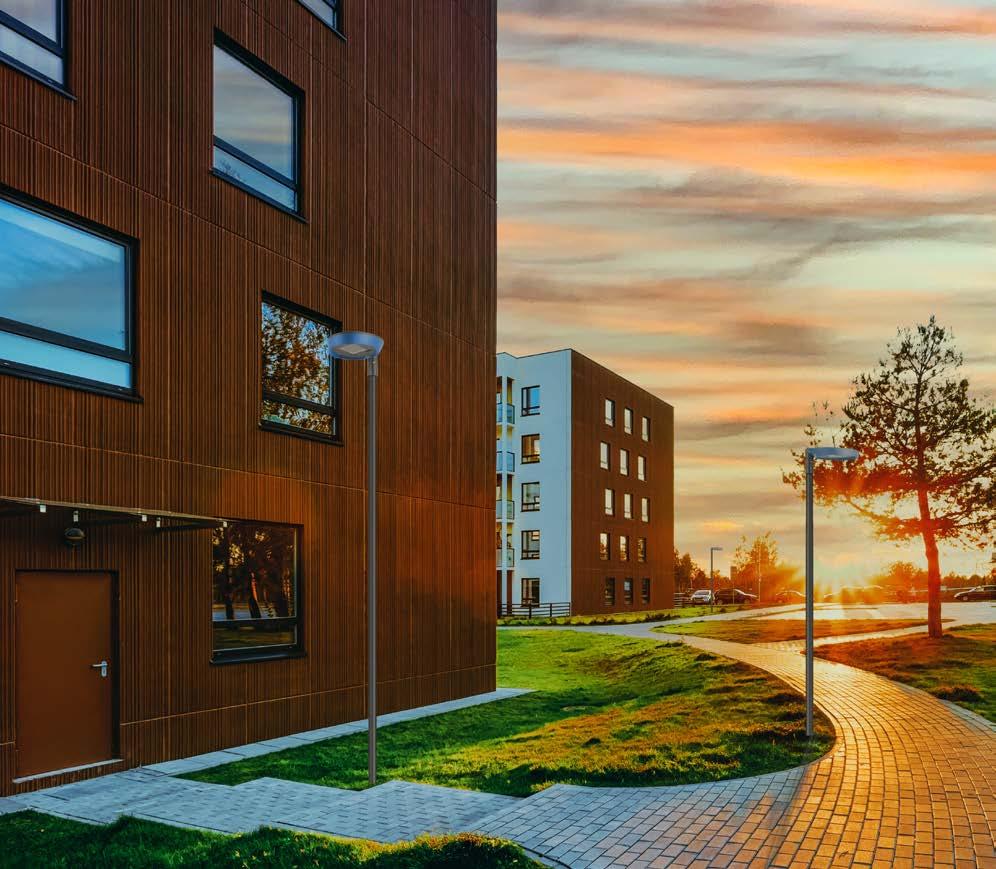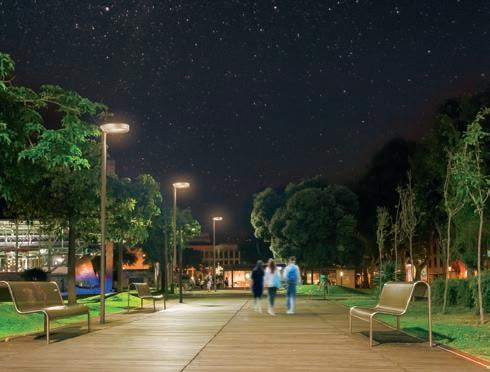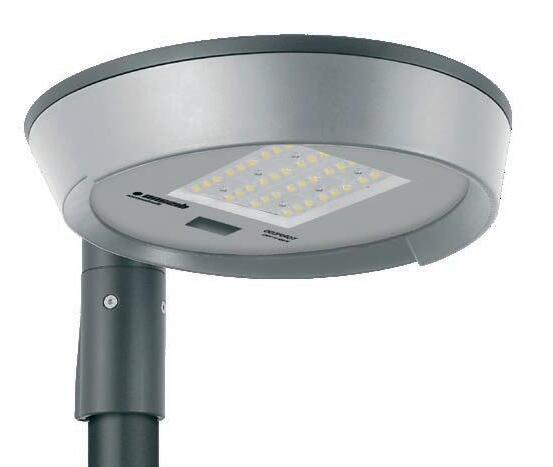


Torpedo 2.0 is a next-generation urban luminaire, an evolution of a Disano top seller, now upgraded with state-of-the-art LED technology. Thanks to its high energy efficiency and extended lifespan, Torpedo is perfectly suited for any urban environment. Its design has been studied to maximise light efficiency while seamlessly blending into the surrounding urban landscape. Featuring a versatile LED configuration, Torpedo 2.0 is available in multiple versions, ensuring optimal light distribution tailored to the specific needs of each setting.

In summary, Torpedo 2.0 offers an advanced urban lighting solution that combines cutting-edge technology, design and exceptional adaptability. It is the ideal choice for those seeking durable, energy-efficient lighting that can meet the demands of diverse urban environments.











Research has shown that different types of lighting can significantly impact nocturnal insects, birds and other creatures that play a vital role in local ecosystems. Environmental organisations are increasingly calling for this aspect to be properly considered in the design of new lighting systems.
Modern LEDs, with a reduced blue light component, provide an opportunity to create less disruptive lighting in streets or parking areas near green spaces, while offering better protection for local wildlife.
Torpedo 2.0 is available as standard with a 3000K and 4000K colour temperature. It is ideal for urban spaces such as public parks, squares, and historic town centres that require an illumination that enhances architectural features while ensuring pedestrian safety, visual comfort, and minimising light pollution.
3000K - 4000K: lamps with white light, instead, is the best choice for lighting up urban areas, streets, residential centres and generally all areas where this type of light guarantees greater safety and visual comfort.
Torpedo 2.0 is available as upon request with a 2200K colour temperature to reproduce a cosy ambient light associated with sunset. In this way, the artificial light becomes a less invasive element in the environment, respecting the needs of the surrounding flora and fauna.
2200K: warm light reduces the risks of excessive exposure to blue light emitted by LED sources and provides a much softer glow in residential areas and, especially, in historic town centres. The latter are particularly sensitive to excessively cold colour temperatures, which diminish the warm tones of ancient walls, historic buildings, and ruins, so cherished by both locals and tourists. Cold lighting distorts the appearance of the architecture, creating a harsh contrast between bright white and totally dark areas. Instead of enhancing the true character of historic centres, cold lighting makes them look dull and lifeless.


You can make your lighting system SMART by integrating sensors into the fixture so that it can detect the movement of people within a given detection area and automatically adjust light intensity according to previously established light levels and delay times. You will also achieve high energy savings without affecting the safety and visual comfort of pedestrians.
The lighting fixtures complete with motion sensors are a functional lighting solution for public spaces. The ability to control the light flux without people moving in a space will let you optimize operating costs, while achieving notable economic savings. This lighting solution is best suited for public or private streets, cycle lanes, private roads, parks and, in general, for any installation where smart lighting control is required.
There are many ways to adjust lighting:
• Luminous flux setting
• CLO (Constant Light Output)
• 1-10V dimming
• Power line carrier remote control
• Nema or Zhaga sockets integrated into the product
And last but not least, the Virtual Midnight feature, offering custom solutions for guaranteed energy savings.
Choose the ideal system that ensures eco-friendly energy consumption!
EXAMPLE OF OPERATION:
a lighting fixture equipped with a radar-type motion sensor may be affected by wind. Therefore, for particularly windy areas, PIR presence sensors are available upon request.
The lighting fixtures with sub-code -1219 complete with motion sensors will adjust the light flux in the presence of moving people by varying the brightness value according to pre-determined levels based on certain times:
1) when there is no motion, the fixtures will keep a certain level of light intensity for a specific period of time
2) when motion is detected in the monitoring area, the luminous flux will dim to 100% of light level
3) if no motion is detected after a certain period of time, the sensor will reset the light level to the pre-set value
Motion sensor - STAND-ALONE
Torpedo 2.0 with sub-code -1219: lighting fixture complete with stand-alone motion sensor with 0/10V control.
Frequency
TECHNICAL SPECIFICATIONS
5.8GHz±75MHz
Stand-by power ≤1W
Setting telecomando
Hold time* 5s / 30s / 1min / 3min / 5min / 10min / 20min / 30min
Ambient light* 2lux / 10lux /30lux / 50lux / OFF
Stand-by time* 0s / 10s / 30s / 1min / 5min / 10min / 30min /+ ∞
Stand-by dimming level* 20% / 30% / 50%
Detection area
50% - 75% - 100%
Detection angle 30° - 150°
Technology Microwave
* adjustable

Remote control cod. 81418618 (to be purchased separately) that allows changing the parameters even after installation is complete and without the need to directly access the fixture.
The fixtures is supplied as standard with the following parameters
NOTE: when placing your order, it is possible upon request a customized configuration that you need to set.
Detection area: the sensor will turn the lights on when it detects motion in this area; with a 100% detection area the sensitivity level is high.
Hold time: the period of time during which lights stay on at full brightness after a person or object has left the detection area.
Ambient light: when the level of light inside a room is below a pre-determined threshold, the sensor will trigger the lights on; when set to ‘disable’, the sensor will operate whenever it detects movement regardless of the amount of light in the room.

Stand-by time: refers to the time the sensor keeps the lights at a dim level after the hold time.
Stand-by dimming level: is the lights’ dimming level during the stand-by time.
* specifications for each detection area (varies depending on the available versions) can be requested at our customer service.
PROG (CLD PROG) available functions
LIGHTING POINT MANAGEMENT OPTIONS ON REQUEST
possibility to choose different lighting point management systems according to the system’s needs:
Luminous flux setup
CLO (Constant Light Output)
1-10V dimming ordered with sub-code -12
PLC remote control ordered with sub-code -0078
This can be done by programming the drive current values requested when ordering/purchasing the fixture
The lighting fixture maintains a constant light output throughout its entire service life
Adjustment range from 10%-100% with 1-10V
Point-to-point and system management and diagnosis system
Luminaire designed for installation on Nema or Zhaga socket: to monitor and manage public lighting centrally, lighting fixtures will always be more equipped with wireless controls that will allow their integration with the IoT.
Today the market offers two solutions: NEMA and ZHAGA. Both solutions offer an electrical and mechanical connection between the control antenna and the lighting fixture.
Nema Socket order with subcode -40 (sealing cap to be ordered separately)
Zhaga Socket order with subcode -0054 (complete with sealing cap)
Mounted directly on the fixture’s body, ideal for remote lighting management applications.

To increase energy savings at night when there are fewer people and vehicles around, a lighting fixture can be programmed according to a specific profile (customizable on request). The fixture reduces its luminous flux through a self-learning process which, depending on the previous switching on and off times, will determine a hypothetical “virtual midnight”. This is the average value between the time the fixture is switched on (sunset) and switched off (sunrise). The “virtual midnight” is the reference point for dimming lights according to the desired profile. The device is integrated in the LED driver and therefore does not require any modification to the system.
In order for the system to function correctly, the system must be adjusted by a device that turns the system on and off on a regular basis every day.
For example, in the central hours of the night, in areas where car and pedestrian traffic decreases significantly, a reduction in luminous flux keeps the light within safety standards, while avoiding waste. If we multiply this reduction by tens or hundreds of lamps, we get significant savings.
ATTENTION:originalsettingsandtimeslotsforthe“virtual midnight” value can be customized in up to 5 steps upon request Virtual Midnight subcode -30: fixtures are equipped with a device to reduce flux in 4 steps based on the calculation of the virtual midnight.
Virtual midnight GREEN AREAS subcode -0001 Virtual midnight SAFETY (PRIVATE PROPERTY) subcode -0002
Ideal for green areas and parks, which are closed to the public at specific hours.
Ideal to maintain safety lights at workplaces, in which people/vehicles are not circulating after work hours.
Virtual midnight CITY (50.000 population) subcode -0007 Virtual midnight VILLAGE (2.000 population) subcode -0009 Virtual midnight TOWN (5.000 population) subcode -0008 Virtual midnight PRIVATE PROPERTY AND COMMERCIAL subcode -0003 Ideal for private property and commercial areas after work hours.
midnight BIG CITY (200.000 population) subcode -0006
for tourist resorts during peak season periods (sea-summer; mountainwinter). Ideal for tourist resorts that do not need to reschedule their lighting times (compromise between high and low season). Ideal for tourist resorts during low season periods. Virtual midnight HIGH SEASONS subcode



































